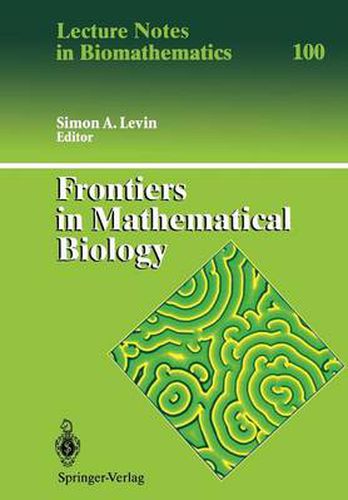Readings Newsletter
Become a Readings Member to make your shopping experience even easier.
Sign in or sign up for free!
You’re not far away from qualifying for FREE standard shipping within Australia
You’ve qualified for FREE standard shipping within Australia
The cart is loading…






This title is printed to order. This book may have been self-published. If so, we cannot guarantee the quality of the content. In the main most books will have gone through the editing process however some may not. We therefore suggest that you be aware of this before ordering this book. If in doubt check either the author or publisher’s details as we are unable to accept any returns unless they are faulty. Please contact us if you have any questions.
From a mathematical point of view, physiologically structured population models are an underdeveloped branch of the theory of infinite dimensional dynamical systems. We have called attention to four aspects: (i) A choice has to be made about the kind of equations one extracts from the predominantly verbal arguments about the basic assumptions, and subsequently uses as a starting point for a rigorous mathematical analysis. Though differential equations are easy to formulate (different mechanisms don’t interact in infinites imal time intervals and so end up as separate terms in the equations) they may be hard to interpret rigorously as infinitesimal generators. Integral equations constitute an attractive alternative. (ii) The ability of physiologically structured population models to increase our un derstanding of the relation between mechanisms at the i-level and phenomena at the p-level will depend strongly on the development of dynamical systems lab facilities which are applicable to this class of models. (iii) Physiologically structured population models are ideally suited for the for mulation of evolutionary questions. Apart from the special case of age (see Charlesworth 1980, Yodzis 1989, Caswell 1989, and the references given there) hardly any theory exists at the moment. This will, hopefully, change rapidly in the coming years. Again the development of appropriate software may turn out to be crucial.
$9.00 standard shipping within Australia
FREE standard shipping within Australia for orders over $100.00
Express & International shipping calculated at checkout
This title is printed to order. This book may have been self-published. If so, we cannot guarantee the quality of the content. In the main most books will have gone through the editing process however some may not. We therefore suggest that you be aware of this before ordering this book. If in doubt check either the author or publisher’s details as we are unable to accept any returns unless they are faulty. Please contact us if you have any questions.
From a mathematical point of view, physiologically structured population models are an underdeveloped branch of the theory of infinite dimensional dynamical systems. We have called attention to four aspects: (i) A choice has to be made about the kind of equations one extracts from the predominantly verbal arguments about the basic assumptions, and subsequently uses as a starting point for a rigorous mathematical analysis. Though differential equations are easy to formulate (different mechanisms don’t interact in infinites imal time intervals and so end up as separate terms in the equations) they may be hard to interpret rigorously as infinitesimal generators. Integral equations constitute an attractive alternative. (ii) The ability of physiologically structured population models to increase our un derstanding of the relation between mechanisms at the i-level and phenomena at the p-level will depend strongly on the development of dynamical systems lab facilities which are applicable to this class of models. (iii) Physiologically structured population models are ideally suited for the for mulation of evolutionary questions. Apart from the special case of age (see Charlesworth 1980, Yodzis 1989, Caswell 1989, and the references given there) hardly any theory exists at the moment. This will, hopefully, change rapidly in the coming years. Again the development of appropriate software may turn out to be crucial.